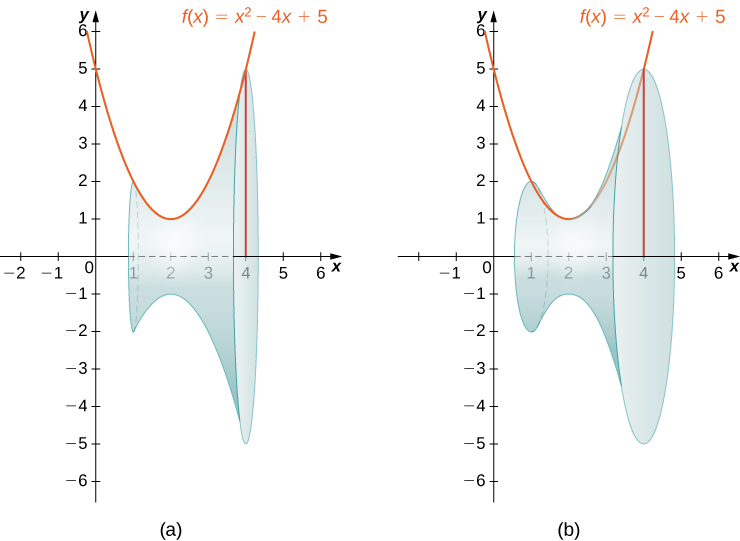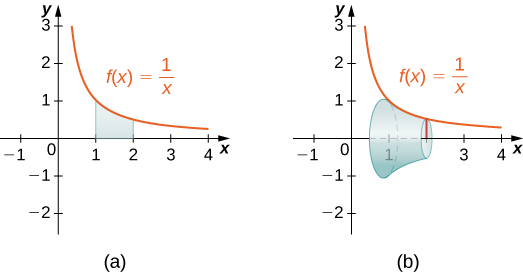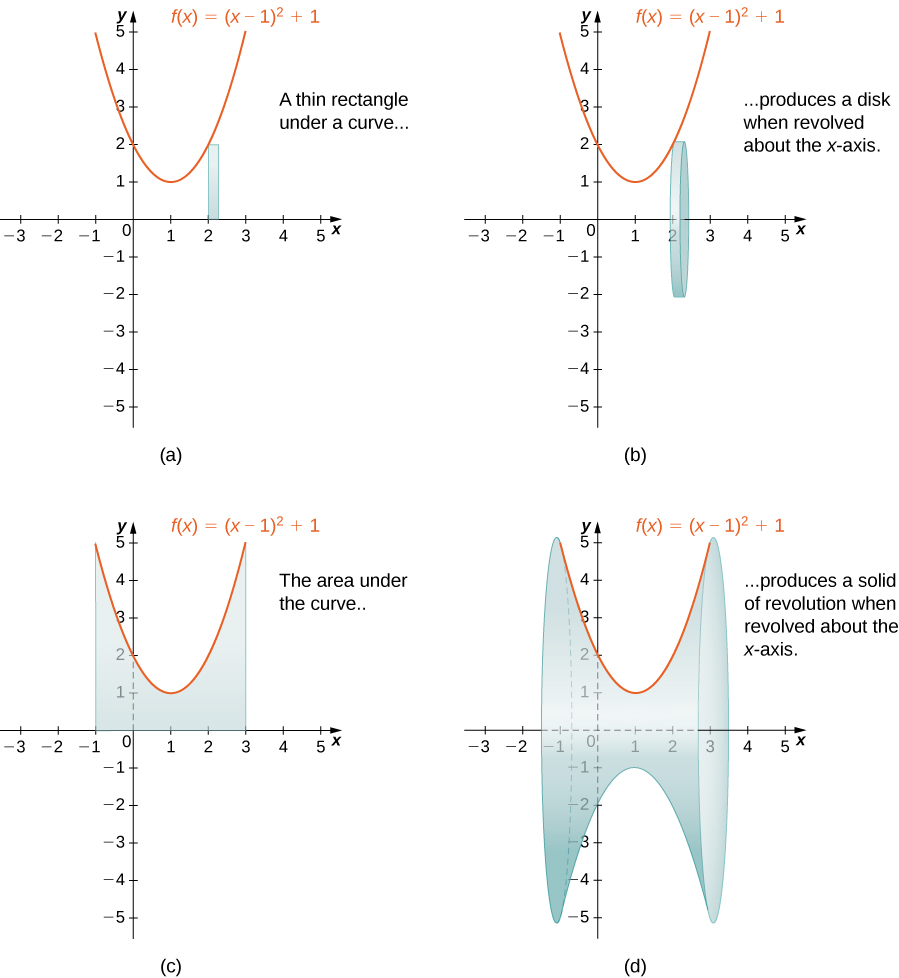| << Chapter < Page | Chapter >> Page > |
Solids of revolution are common in mechanical applications, such as machine parts produced by a lathe. We spend the rest of this section looking at solids of this type. The next example uses the slicing method to calculate the volume of a solid of revolution.
Use an online integral calculator to learn more.
Use the slicing method to find the volume of the solid of revolution bounded by the graphs of and rotated about the
Using the problem-solving strategy, we first sketch the graph of the quadratic function over the interval as shown in the following figure.

Next, revolve the region around the x -axis, as shown in the following figure.

Since the solid was formed by revolving the region around the the cross-sections are circles (step 1). The area of the cross-section, then, is the area of a circle, and the radius of the circle is given by Use the formula for the area of the circle:
The volume, then, is (step 3)
The volume is
Use the method of slicing to find the volume of the solid of revolution formed by revolving the region between the graph of the function and the over the interval around the See the following figure.

When we use the slicing method with solids of revolution, it is often called the disk method because, for solids of revolution, the slices used to over approximate the volume of the solid are disks. To see this, consider the solid of revolution generated by revolving the region between the graph of the function and the over the interval around the The graph of the function and a representative disk are shown in [link] (a) and (b). The region of revolution and the resulting solid are shown in [link] (c) and (d).

We already used the formal Riemann sum development of the volume formula when we developed the slicing method. We know that
The only difference with the disk method is that we know the formula for the cross-sectional area ahead of time; it is the area of a circle. This gives the following rule.
Let be continuous and nonnegative. Define as the region bounded above by the graph of below by the on the left by the line and on the right by the line Then, the volume of the solid of revolution formed by revolving around the is given by
The volume of the solid we have been studying ( [link] ) is given by

Notification Switch
Would you like to follow the 'Calculus volume 1' conversation and receive update notifications?